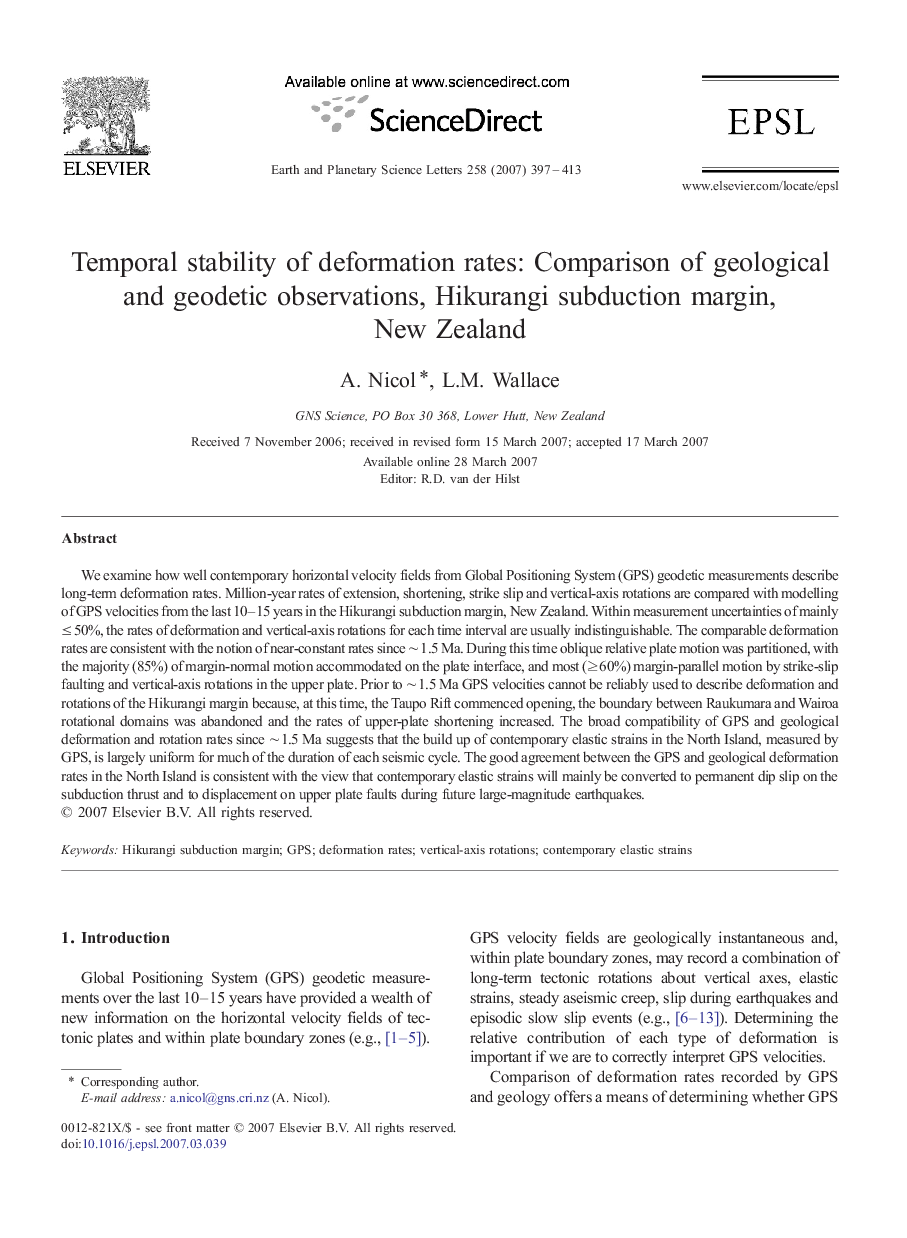| Article ID | Journal | Published Year | Pages | File Type |
|---|---|---|---|---|
| 4680340 | Earth and Planetary Science Letters | 2007 | 17 Pages |
We examine how well contemporary horizontal velocity fields from Global Positioning System (GPS) geodetic measurements describe long-term deformation rates. Million-year rates of extension, shortening, strike slip and vertical-axis rotations are compared with modelling of GPS velocities from the last 10–15 years in the Hikurangi subduction margin, New Zealand. Within measurement uncertainties of mainly ≤ 50%, the rates of deformation and vertical-axis rotations for each time interval are usually indistinguishable. The comparable deformation rates are consistent with the notion of near-constant rates since ∼ 1.5 Ma. During this time oblique relative plate motion was partitioned, with the majority (85%) of margin-normal motion accommodated on the plate interface, and most (≥ 60%) margin-parallel motion by strike-slip faulting and vertical-axis rotations in the upper plate. Prior to ∼ 1.5 Ma GPS velocities cannot be reliably used to describe deformation and rotations of the Hikurangi margin because, at this time, the Taupo Rift commenced opening, the boundary between Raukumara and Wairoa rotational domains was abandoned and the rates of upper-plate shortening increased. The broad compatibility of GPS and geological deformation and rotation rates since ∼ 1.5 Ma suggests that the build up of contemporary elastic strains in the North Island, measured by GPS, is largely uniform for much of the duration of each seismic cycle. The good agreement between the GPS and geological deformation rates in the North Island is consistent with the view that contemporary elastic strains will mainly be converted to permanent dip slip on the subduction thrust and to displacement on upper plate faults during future large-magnitude earthquakes.
